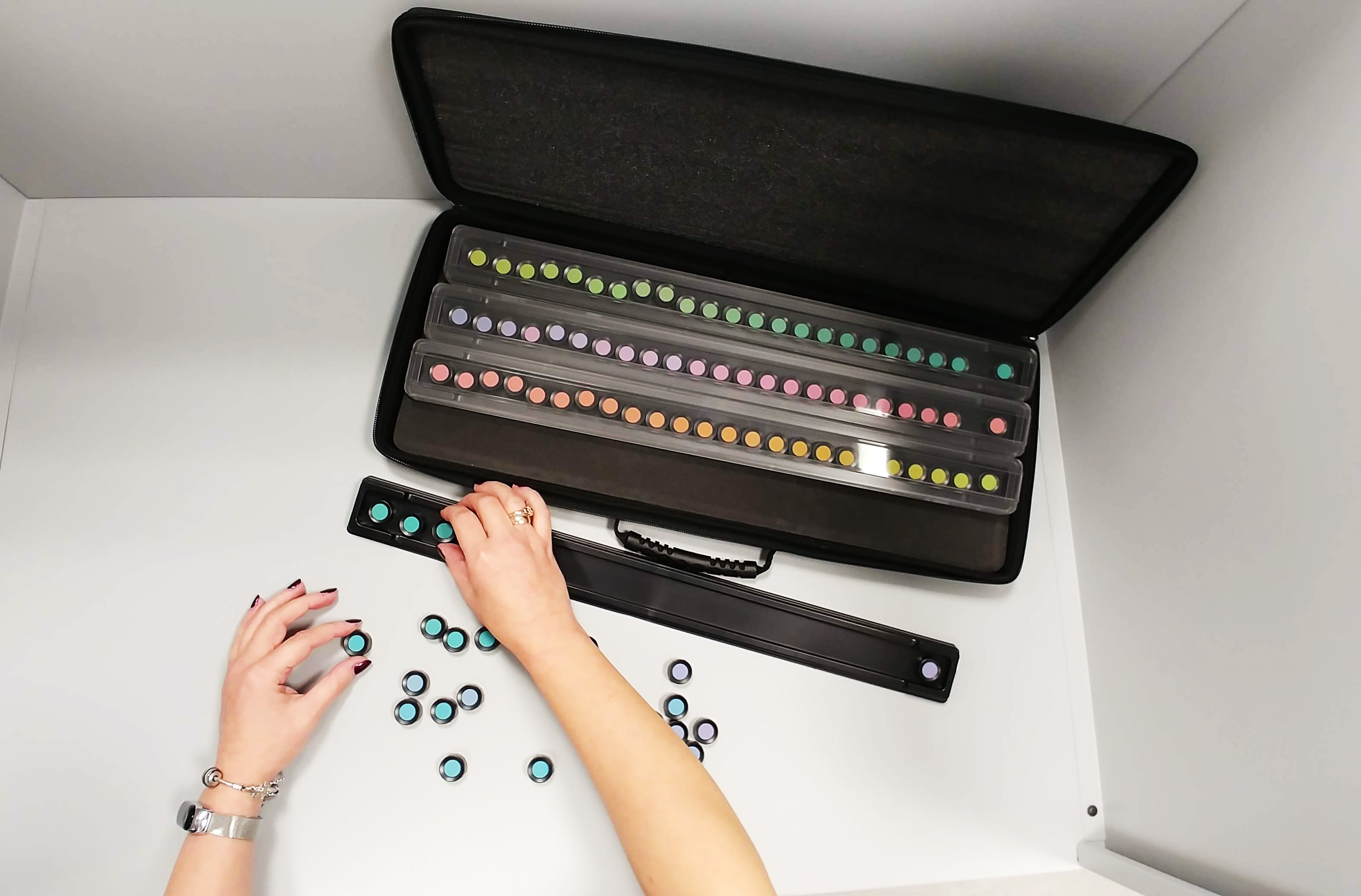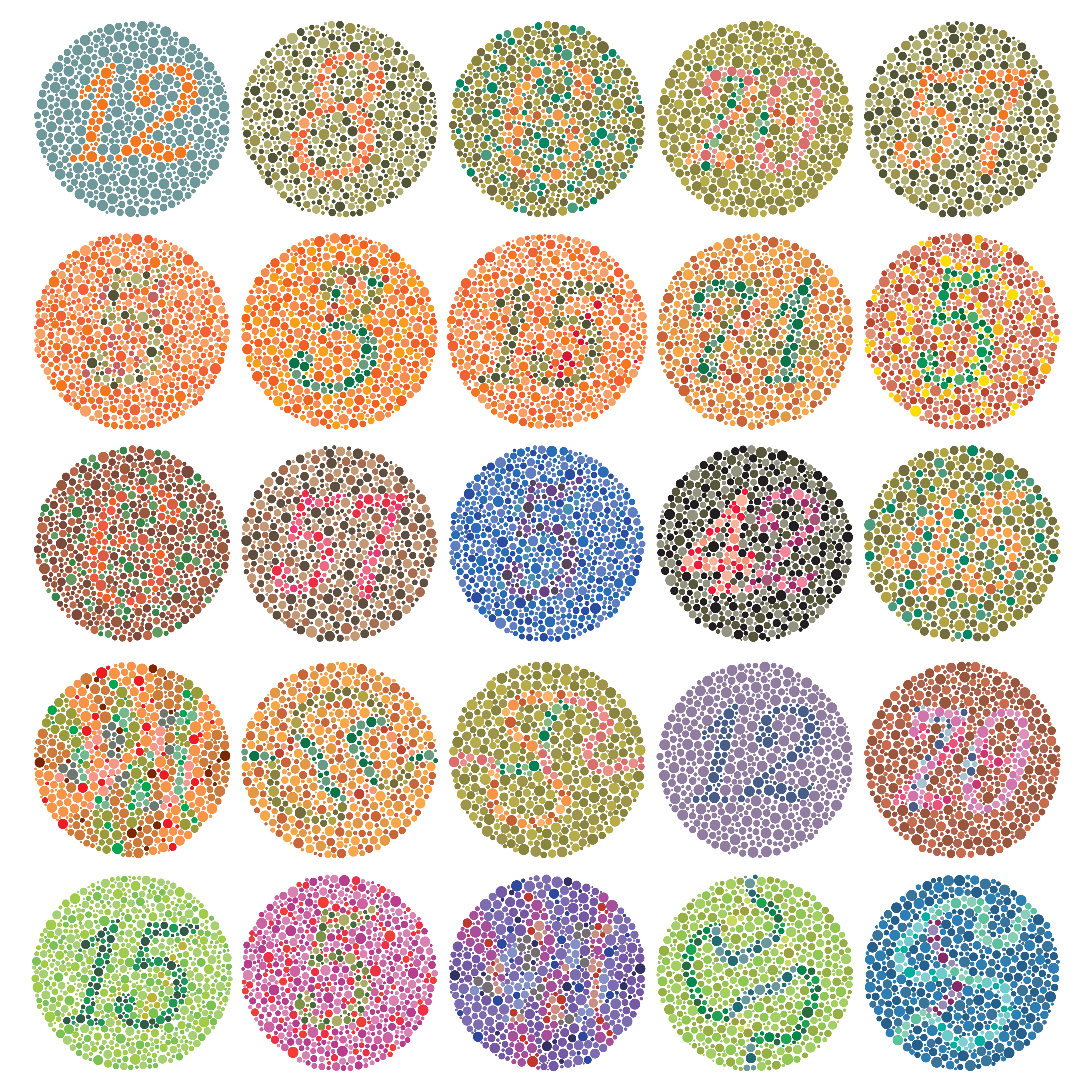Updated on June 13, 2025
How to Test for Color Blindness


Vision Center is funded by our readers. We may earn commissions if you purchase something via one of our links.
If you’re having trouble distinguishing colors, you might be color blind. Color blindness can feel limiting and, at times, frustrating.
But you’re not alone; approximately 8% of men and under 1% of women have some form of color vision deficiency. In this article, we’ll discuss everything you need to know about color blindness and how to get tested.
What is Color Blindness?
Color blindness causes you to see colors differently from most people. This common condition makes it difficult to distinguish between certain colors.
Listen In Q&A Format
Color Blindness
Vision Center Podcast
Many people use the term “color blind”, but it’s rare for anyone to be truly blind to all colors. The more accurate term to describe most people’s experience might be “color vision deficiency” or “poor color vision.”
How to Get Tested for Color Blindness
If you're concerned about your color vision, start with a simple online screening. One of the quickest and most reliable options is the Ishihara dot test.
This is a series of images made from colored dots, each hiding numbers or shapes. You can find reputable, free online versions of the Ishihara test easily, but keep in mind that lighting conditions and your screen quality can affect results.

Always perform the test in good, consistent lighting and avoid screen glare. There are also other tests available for you to try; these include:
Smartphone Apps
Apps like the EnChroma Color Blind Test can quickly give you an indication of whether you have trouble distinguishing certain colors. However, these apps aren't perfect and shouldn't replace professional diagnosis.
Remember, online and app-based tests are screenings, not diagnoses. They can identify if you likely have a color vision issue, but you'll need a clinical exam to confirm it accurately.
Hardy, Rand, and Rittler Tests
Another test that uses pseudoisochromatic color plates is the Hardy, Rand, and Rittler (HRR) test.
This test looks very similar to the Ishihara test. The most significant difference is that the Ishihara test primarily screens for red-green deficiencies, while the HRR test can also screen for blue-yellow color vision problems.
Arrangement Tests
The tests mentioned above are only screening tools. They don’t pick up on subtle color vision deficiencies.

If your eye doctor suspects a color vision problem, they may administer color vision tests. These have a greater level of sophistication.
Farnsworth-Munsell 100-hue Test
The Farnsworth-Munsell 100-hue test provides more details than pseudoisochromatic color tests. The Farnsworth D-15 test is a shortened version of this test.
Both tests require the patient to arrange several colored discs in a particular order. The order depends on the color and intensity of the color.
Based on the mistakes you make in the arrangement, your eye doctor can determine any color vision deficiencies.
Farnsworth Lantern Test
The Farnsworth Lantern test involves showing people nine pairs of vertically aligned dots of light. They can be green, yellow-white (often described simply as white), or red.
Some pairs may be the same color. The pairs appear for two seconds, and the test taker identifies the colors in each pair.
This test determines a person’s ability to identify maritime and aviation signal lights. It screens for moderate and severe cases of color deficiency but does not rule out mild conditions.
What Causes Color Blindness?
People can inherit color blindness through genetics, which can be present at birth. However, you can also acquire the condition later in life, usually due to damage or disease.

People can acquire color blindness in many ways, including:
- Age-related macular degeneration
- Eye diseases and injuries
- Certain medications
- Chemical toxicity
Red-green color blindness is usually an X-linked genetic condition, caused by mutations in genes known as OPN1LW and OPN1MW. Since males have only one X chromosome, they're more commonly affected.
Blue-yellow color blindness and total color blindness (achromatopsia) are autosomal conditions, meaning both genders are equally likely to be affected, but these are far less common.
How to Manage Color Blindness
While color vision deficiencies can’t yet be permanently cured, practical tools and simple adjustments can significantly improve daily life.
Color-filter glasses like EnChroma or Pilestone use specialized lenses to enhance color contrast. However, these glasses don’t restore normal color vision, so managing your expectations is important.
Additionally, there are apps and specialized software that adjust colors on your screen, making difficult distinctions clearer. Apps like Color Grab use your phone’s camera to instantly identify and label colors for you, which is particularly helpful when shopping for clothes or handling color-coded materials.
When to See an Eye Care Professional
If online screening tests indicate a potential issue, scheduling a comprehensive eye exam is crucial to confirm and precisely classify your color vision deficiency.
A full diagnostic exam might include tests like the anomaloscope. This sophisticated device precisely measures color vision by adjusting red and green lights.
They may also use the Farnsworth-Munsell 100 Hue Test, which involves arranging colored caps in order.
In this article
5 sources cited
Updated on June 13, 2025
Updated on June 13, 2025
About Our Contributors
Lauren, with a bachelor's degree in biopsychology from The College of New Jersey and public health coursework from Princeton University, is an experienced medical writer passionate about eye health. Her writing is characterized by clarity and engagement, aiming to make complex medical topics accessible to all. When not writing, Lauren dedicates her time to running a small farm with her husband and their four dogs.
Dr. Melody Huang is an optometrist and freelance health writer with a passion for educating people about eye health. With her unique blend of clinical expertise and writing skills, Dr. Huang seeks to guide individuals towards healthier and happier lives. Her interests extend to Eastern medicine and integrative healthcare approaches. Outside of work, she enjoys exploring new skincare products, experimenting with food recipes, and spending time with her adopted cats.

